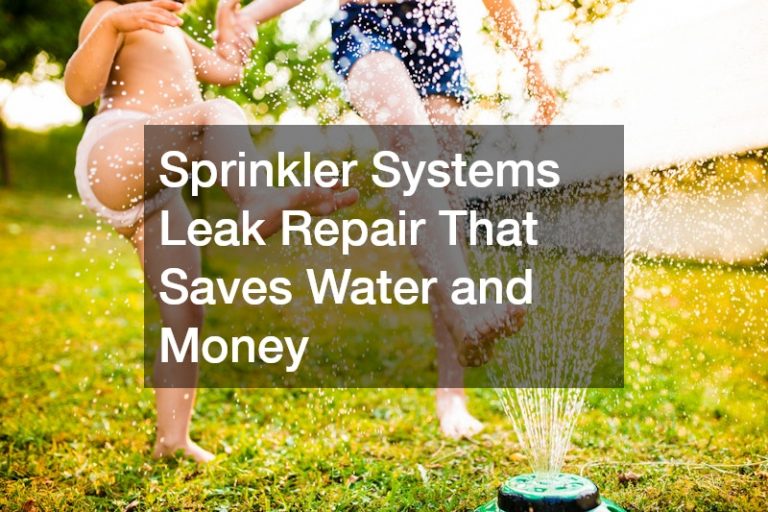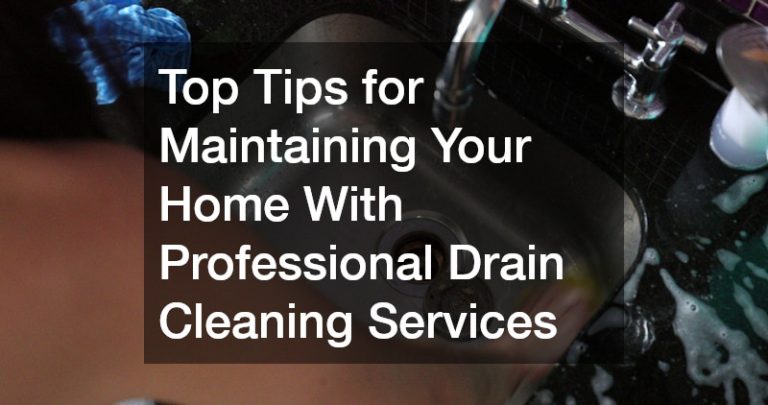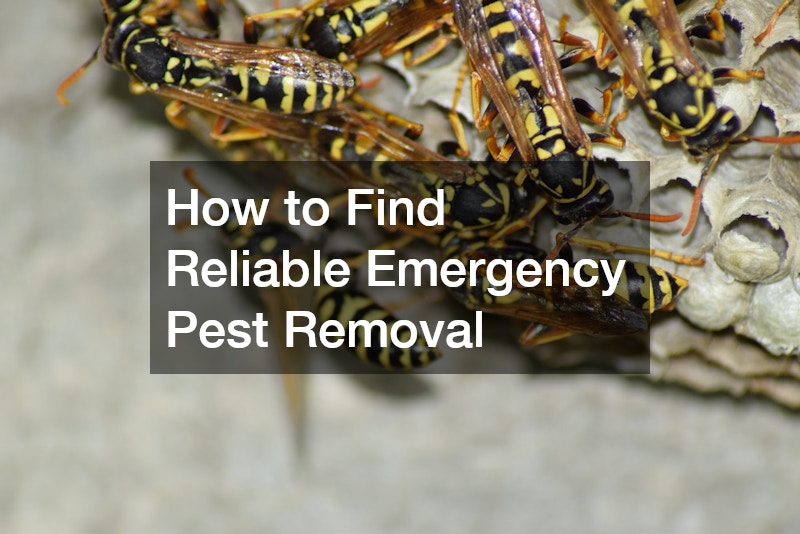

How to Find Reliable Emergency Pest Removal
Introduction
Emergencies involving pest infestations can strike without warning, leaving homeowners and businesses in urgent need of effective solutions. The panic and confusion that follow can make it difficult to know where to turn for help. In these situations, reliable emergency pest removal services become a lifeline, ensuring that immediate action is taken to address the issue. This article explores how to find dependable pest removal services, touching on the key considerations and frequently asked questions that can guide you in making the right choice. By understanding the scope of emergency pest control, the importance of choosing the right provider, and how to prepare for such services, you can ensure a quicker, safer, and more efficient resolution.
What Is Emergency Pest Removal?
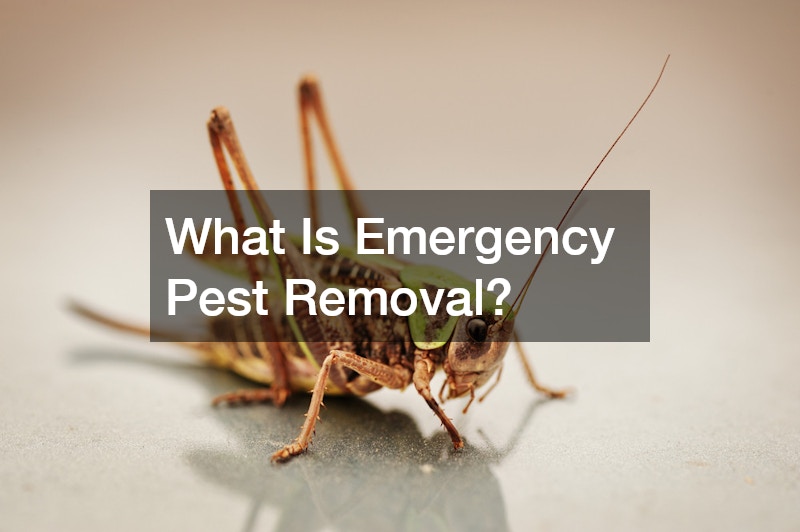
Definition and Scope
Emergency pest removal refers to the immediate intervention required when pests invade a home or business unexpectedly and create an urgent situation. Unlike regular pest control services, which can often be scheduled in advance, emergency pest removal focuses on providing swift action in situations where the threat is imminent or severe.
Common Scenarios Requiring Immediate Attention
Several scenarios may require emergency pest removal. These can include infestations of venomous pests, such as spiders or bees, which pose a direct health threat. Other situations may involve rapid pest growth, such as rodents chewing through wires or termites attacking wooden structures. In these cases, a quick response is essential to avoid further harm. For example, a rodent infestation can lead to significant property damage if left untreated, especially in areas like attics or basements where rodents tend to nest. Similarly, termite infestations often go unnoticed for a long time but can result in severe damage to a home’s foundation and structural integrity. Immediate termite exterminating services are crucial to prevent extensive property damage.
Types of Pests Involved
The types of pests requiring emergency removal can vary significantly, but common culprits include rodents, cockroaches, termites, wasps, ants, bedbugs, and other insects that invade the home. Depending on the severity of the infestation and the potential risks to human health and property, different treatment methods may be employed. For example, a termite exterminator may use specialized equipment to assess damage and treat the area with targeted solutions to eliminate the termites and prevent further destruction. In other cases, local insect removal companies may use traps, baits, or other methods to handle infestations of cockroaches or ants, which can proliferate quickly in warm environments.
Service Availability and Speed
One of the distinguishing features of emergency pest removal is the speed at which services are offered. Unlike routine pest control, which allows for flexible scheduling, emergency services are available around the clock. Many companies offer 24/7 assistance, ensuring that you can receive immediate help when the situation demands urgency. Whether it’s late at night or early in the morning, local exterminators are often available to respond to calls and handle infestations quickly. For situations that arise outside of typical business hours, having a pest control company on call for emergencies is essential for minimizing damage and mitigating potential health risks.
Differences from Regular Pest Control
The primary difference between emergency pest removal and regular pest control lies in the response time. Emergency pest removal services are designed to act swiftly to prevent further damage or health risks, while regular pest control may involve scheduled visits and more thorough treatments that can be planned in advance. For example, routine mosquito control services may involve preventive measures during peak mosquito seasons, while an emergency mosquito infestation may require immediate fogging or targeted treatments to eliminate large swarms. Regular pest control focuses on long-term solutions, while emergency services are meant to address immediate and urgent needs.
How to Identify a Pest Emergency?
Signs of Pest Infestation
Recognizing the signs of a pest infestation is crucial to determining whether you need emergency pest removal services. Indicators may include seeing pests in unusual areas, such as in the kitchen or bathroom, finding droppings, hearing scurrying noises in walls or ceilings, or noticing damage to your property, such as chewed wires or wood. For instance, if you spot termites near your retaining wall or foundation, it may be time to call a termite exterminator immediately. Additionally, if you discover rodent droppings in your attic or along your walls, you may need a local exterminator to quickly remove the pests and prevent them from causing further damage.
Assessing the Severity of the Situation
Not all pest problems require emergency action. However, if the infestation is large-scale or involves particularly dangerous pests, it’s essential to assess the situation. A small group of ants may not warrant immediate action, but a rodent infestation that threatens electrical safety is a clear emergency. Similarly, termites can cause structural damage to your home if not addressed quickly, especially if they are feeding on wooden beams or foundations. An immediate response from a professional termite exterminating service can prevent more significant issues.
Health and Safety Risks
Pests can pose significant health and safety risks, particularly when they carry diseases or allergens. Rodents, for example, can contaminate food, while cockroaches are known to trigger asthma. In such cases, emergency pest control services are needed to eliminate the pests before they cause harm. Bedbugs, which often infest bedding and furniture, are another example of pests that can create significant discomfort and health risks if left untreated. Additionally, mosquitoes can transmit diseases such as malaria, West Nile virus, and Zika, making it critical to seek mosquito control in areas with significant mosquito populations.
Property Damage Considerations
In some cases, pests can cause significant property damage, such as termites weakening the structure of your home or rodents chewing through insulation and wiring. If these issues aren’t addressed quickly, they could result in costly repairs or, in extreme cases, compromised safety. A landscaper may be needed to assess the exterior of your property to determine whether any landscaping or features, such as retaining walls or foundations, are attracting pests like termites or rodents. If pests are causing damage to your landscaping, a professional pest control company can provide targeted solutions to protect your property.
When to Call in Professionals
If you notice any of the above signs and the situation seems to be getting worse, it’s time to call in a professional pest control service. If you’re unsure, it’s always better to err on the side of caution and seek professional assistance. Whether it’s a rodent issue, a termite infestation, or an invasion of insects, calling in local exterminators can ensure that the problem is addressed quickly and safely.
Why Is Choosing the Right Service Vital?
Importance of Proper Pest Management
Effective pest management goes beyond simply removing the pests. A reliable service provider ensures that pests are not only eradicated but that the infestation is dealt with in a way that prevents future occurrences. Proper pest management helps protect both your health and your property. For example, a local insect removal company may offer integrated pest management solutions, combining chemical treatments with traps and long-term preventive measures to reduce the chances of recurring infestations.
Consequences of Poor Service
Choosing an unreliable pest control service can result in ineffective pest removal, leading to recurring infestations. Poor services may use harmful chemicals improperly, putting your family’s health at risk. Additionally, an inexperienced provider might fail to address the root cause of the infestation, resulting in wasted time and money. In the case of termites, for instance, a poorly executed treatment plan may fail to address the colony, allowing the termites to return and continue causing damage.
Long-term Impact on Home and Health
The long-term effects of improper pest control can be severe. If pests are not removed completely or if they return shortly after treatment, they may cause lasting damage to your home. The health risks associated with certain pests, such as rodents or cockroaches, can lead to chronic illnesses or long-term medical conditions. Furthermore, pest damage to structural elements like a retaining wall or foundation can be costly to repair if not addressed quickly.
Efficiency and Effectiveness
Efficiency in emergency pest removal is key. An effective service provider should be able to assess the situation, develop a treatment plan, and execute the necessary actions swiftly and thoroughly. You should expect both a timely response and effective solutions that target the root of the problem. A pest control company that specializes in emergency services should have the tools and expertise needed to resolve the issue quickly, reducing the likelihood of further damage.
Cost-saving Benefits
While opting for a low-cost or inexperienced pest control service might seem like a good idea in the short term, it can lead to more expensive issues down the line. Reliable and experienced service providers may charge more initially, but their ability to solve the problem quickly and thoroughly can save you from costly repairs or additional treatments. This is particularly true in situations involving termites, rodents, or other pests that can cause extensive property damage.
How to Find Reliable Service Providers?
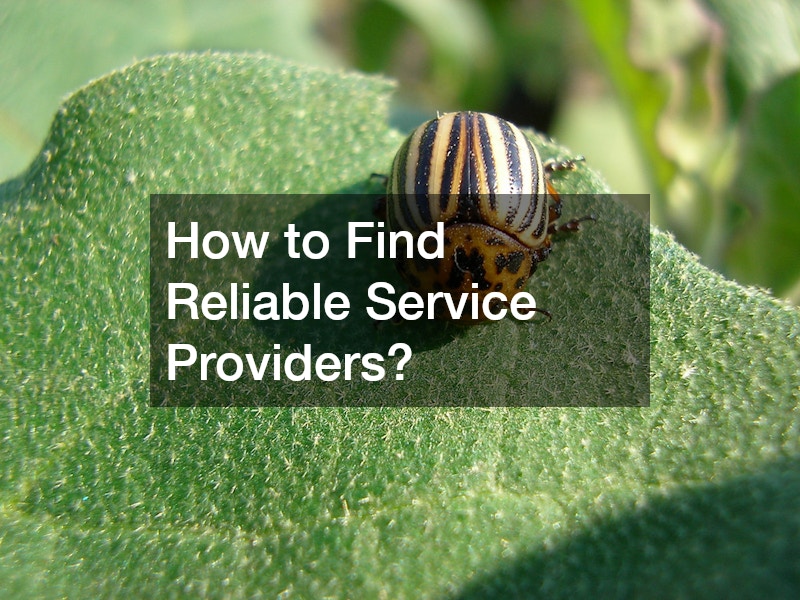
Checking Credentials and Licensing
One of the first steps in finding a reliable emergency pest removal service is to verify the company’s credentials. A reputable service provider will have the necessary licenses and certifications to operate in your area. These credentials ensure that the company complies with local regulations and industry standards. For example, a termite exterminator should be licensed and certified to handle the specific chemicals and treatments needed to address a termite infestation.
Reading Customer Reviews
Customer reviews can provide valuable insight into a company’s reputation and quality of service. Look for companies with consistently positive feedback, particularly regarding their responsiveness and effectiveness. Negative reviews can also help you avoid services that may not meet your needs.
Evaluating Experience Levels
When dealing with a pest emergency, experience is crucial. An experienced provider will have the knowledge and skills to handle a wide range of pest issues. Ensure the service provider has a proven track record of successfully managing emergencies similar to yours. A local insect removal company with years of experience can be particularly helpful when dealing with a variety of pests that require tailored solutions.
Comparing Multiple Quotes
Obtaining quotes from multiple providers allows you to compare pricing and services. While cost shouldn’t be the sole deciding factor, comparing quotes can give you a sense of the going rate and help you determine if a service is offering good value for the price. For more complex infestations, such as termite damage or rodent control, a professional pest control company will often offer customized quotes based on the extent of the problem.
Recommendations from Trusted Sources
Personal recommendations from friends, family, or neighbors who have used pest control services in the past can be invaluable. Trustworthy sources can provide honest feedback on the quality of service and help you avoid unreliable companies.
What Qualifications to Look for?
Certified Pest Control Technicians
A certified pest control technician has undergone the necessary training and passed exams to prove their competence. Certification ensures that the technician is familiar with the latest pest control methods and safety practices.
Ongoing Training and Education
Pest control is an evolving field, and new technologies and methods are constantly being developed. A reliable service provider will prioritize ongoing training for their technicians to stay up to date with the latest advancements in pest management.
Membership in Professional Associations
Companies that belong to professional associations, such as the National Pest Management Association (NPMA), often adhere to higher standards of service. Membership in such organizations demonstrates a commitment to quality and professionalism.
Insurance and Bonding Requirements
Make sure that the pest control service is insured and bonded. This provides financial protection in the event of property damage or other issues during the removal process.
Compliance with Industry Standards
A trustworthy provider should comply with industry standards and regulations. Compliance ensures that the company’s methods and practices are safe for both humans and the environment.
What Questions to Ask Providers?

Service Methods and Chemicals Used
It’s important to ask about the methods and chemicals used in pest removal. Inquire whether the chemicals are safe for children, pets, and the environment. You should also ask about the safety measures the company takes during the treatment process.
Expected Timeframes for Resolution
Knowing how long the pest removal process will take helps you plan accordingly. Ask the provider for a clear timeline and expected resolution to avoid unnecessary delays.
Guarantees and Warranties Offered
Some pest control companies offer guarantees or warranties on their services. Find out if the provider offers any sort of guarantee and what the terms are, in case the problem persists after treatment.
Follow-up and Maintenance Options
Follow-up services are often necessary to ensure that pests don’t return. Ask whether the provider offers ongoing maintenance or monitoring after the initial treatment.
Emergency Response Procedures
Finally, ensure the provider has a clear plan for responding to emergencies. Ask about their response times and availability, especially in after-hours situations.
How is Pricing Determined?
Factors Influencing Cost
The cost of emergency pest removal can vary depending on factors such as the severity of the infestation, the type of pest involved, and the size of your property. Larger infestations or more dangerous pests may require more extensive treatments, resulting in higher costs.
Understanding Quotes and Estimates
When requesting a quote, ensure that the provider provides a detailed breakdown of the services they offer and any additional fees. This transparency helps you understand what you’re paying for and avoids hidden charges.
Comparing Pricing Structures
Different companies may have different pricing structures. Some charge a flat fee, while others charge based on the type of service required. Understanding these differences can help you make an informed decision.
Hidden Fees to Watch Out For
Be cautious of companies that quote low prices upfront but add hidden fees later on. Always ask for a detailed estimate to avoid unexpected costs.
Cost vs. Value in Emergency Services
While it’s important to consider the cost, the value of a quick and effective service often outweighs the price tag. In pest emergencies, you should prioritize quality service over trying to save money.
How to Prepare for Emergency Pest Removal?
Pre-service Preparation Tips
Before the pest control technician arrives, ensure your home is prepared for treatment. This may involve securing food, covering furniture, and ensuring that technicians have easy access to the areas affected by pests.
Ensuring Safety and Accessibility
Make sure the service provider has unobstructed access to the infested areas. You may also need to clear any items that could hinder the treatment process.
Communicating with Family and Neighbors
Let your family and neighbors know about the pest removal, especially if chemicals or treatments could affect shared spaces.
Managing Pets and Children
Pets and children should be kept away from treated areas during and after the removal process. Follow the provider’s guidelines for keeping everyone safe during treatment.
Post-service Cleanup and Organization
Once the pest removal is complete, you may need to clean the treated areas. Follow the provider’s instructions regarding any necessary cleanup to ensure safety.
What Are the Best Practices Post-Service?
Monitoring for Recurrence
After the pest removal service, monitor your home regularly for signs of recurring infestations. If you notice any issues, contact the provider immediately for follow-up treatment.
Preventative Measures
Taking preventative measures, such as sealing entry points and keeping food stored properly, can help reduce the risk of future infestations.
Re-evaluating Maintenance Practices
Consider implementing a regular pest management plan to maintain control over potential pest issues.
Continuing Communication with Service Providers
Stay in contact with your service provider to ensure ongoing pest control and discuss any changes or concerns.
Education and Awareness
Educating yourself and your family about pest prevention is crucial in maintaining a pest-free environment.
How Can Technology Assist in Pest Removal?
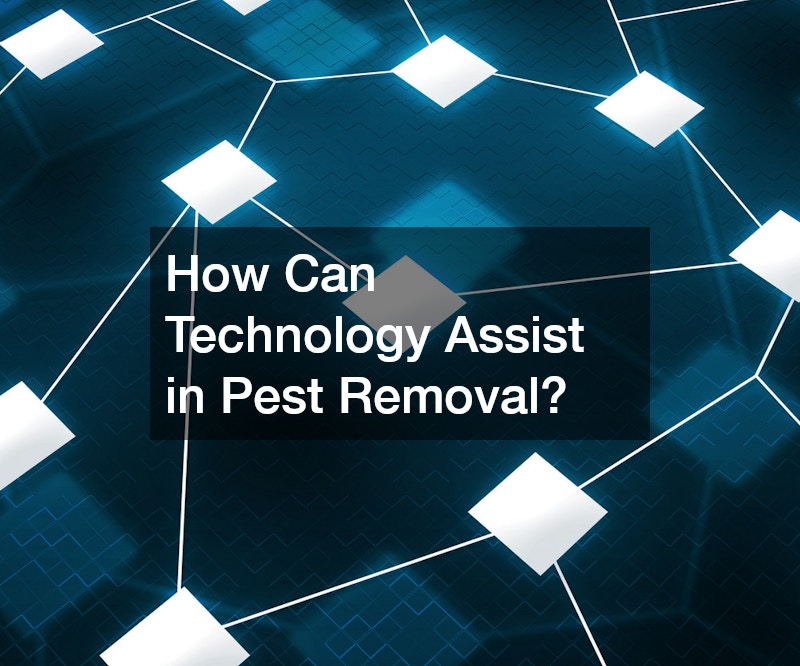
Modern Tools and Equipment
Technology plays a significant role in modern pest control. High-tech equipment, such as thermal cameras and sensors, helps identify infestations early and ensure more accurate treatments.
Management Software Used by Professionals
Many pest control companies use management software to track the status of pest removal jobs, ensuring efficiency and proper documentation.
Innovations in Pest Detection
New technologies, such as AI-powered pest detection systems, are helping pest control services identify and address infestations more quickly and accurately.
Remote Monitoring Solutions
Remote monitoring technology allows pest control providers to track activity in real-time and respond promptly when necessary.
Role of AI in Pest Management
Artificial intelligence is revolutionizing pest management by analyzing patterns in pest behavior, predicting infestations, and recommending proactive treatments.
Conclusion
Finding reliable emergency pest removal services is essential when dealing with unforeseen infestations that threaten the safety and integrity of your property. By understanding the factors involved in choosing a service provider, asking the right questions, and preparing adequately, you can ensure a quick, effective, and safe pest removal experience. With the right approach, you can address pest problems with confidence and peace of mind.
How to Find Reliable Emergency Pest Removal
Introduction
Emergencies involving pest infestations can strike without warning, leaving homeowners and businesses in urgent need of effective solutions. The panic and confusion that follow can make it difficult to know where to turn for help. In these situations, reliable emergency pest removal services become a lifeline, ensuring that immediate action is taken to address the issue. This article explores how to find dependable pest removal services, touching on the key considerations and frequently asked questions that can guide you in making the right choice. By understanding the scope of emergency pest control, the importance of choosing the right provider, and how to prepare for such services, you can ensure a quicker, safer, and more efficient resolution.
What Is Emergency Pest Removal?
Definition and Scope
Emergency pest removal refers to the immediate intervention required when pests invade a home or business unexpectedly and create an urgent situation. Unlike regular pest control services, which can often be scheduled in advance, emergency pest removal focuses on providing swift action in situations where the threat is imminent or severe.
Common Scenarios Requiring Immediate Attention
Several scenarios may require emergency pest removal. These can include infestations of venomous pests, such as spiders or bees, which pose a direct health threat. Other situations may involve rapid pest growth, such as rodents chewing through wires or termites attacking wooden structures. In these cases, a quick response is essential to avoid further harm. For example, a rodent infestation can lead to significant property damage if left untreated, especially in areas like attics or basements where rodents tend to nest. Similarly, termite infestations often go unnoticed for a long time but can result in severe damage to a home’s foundation and structural integrity. Immediate termite exterminating services are crucial to prevent extensive property damage.
Types of Pests Involved
The types of pests requiring emergency removal can vary significantly, but common culprits include rodents, cockroaches, termites, wasps, ants, bedbugs, and other insects that invade the home. Depending on the severity of the infestation and the potential risks to human health and property, different treatment methods may be employed. For example, a termite exterminator may use specialized equipment to assess damage and treat the area with targeted solutions to eliminate the termites and prevent further destruction. In other cases, local insect removal companies may use traps, baits, or other methods to handle infestations of cockroaches or ants, which can proliferate quickly in warm environments.
Service Availability and Speed
One of the distinguishing features of emergency pest removal is the speed at which services are offered. Unlike routine pest control, which allows for flexible scheduling, emergency services are available around the clock. Many companies offer 24/7 assistance, ensuring that you can receive immediate help when the situation demands urgency. Whether it’s late at night or early in the morning, local exterminators are often available to respond to calls and handle infestations quickly. For situations that arise outside of typical business hours, having a pest control company on call for emergencies is essential for minimizing damage and mitigating potential health risks.
Differences from Regular Pest Control
The primary difference between emergency pest removal and regular pest control lies in the response time. Emergency pest removal services are designed to act swiftly to prevent further damage or health risks, while regular pest control may involve scheduled visits and more thorough treatments that can be planned in advance. For example, routine mosquito control services may involve preventive measures during peak mosquito seasons, while an emergency mosquito infestation may require immediate fogging or targeted treatments to eliminate large swarms. Regular pest control focuses on long-term solutions, while emergency services are meant to address immediate and urgent needs.
How to Identify a Pest Emergency?
Signs of Pest Infestation
Recognizing the signs of a pest infestation is crucial to determining whether you need emergency pest removal services. Indicators may include seeing pests in unusual areas, such as in the kitchen or bathroom, finding droppings, hearing scurrying noises in walls or ceilings, or noticing damage to your property, such as chewed wires or wood. For instance, if you spot termites near your retaining wall or foundation, it may be time to call a termite exterminator immediately. Additionally, if you discover rodent droppings in your attic or along your walls, you may need a local exterminator to quickly remove the pests and prevent them from causing further damage.
Assessing the Severity of the Situation
Not all pest problems require emergency action. However, if the infestation is large-scale or involves particularly dangerous pests, it’s essential to assess the situation. A small group of ants may not warrant immediate action, but a rodent infestation that threatens electrical safety is a clear emergency. Similarly, termites can cause structural damage to your home if not addressed quickly, especially if they are feeding on wooden beams or foundations. An immediate response from a professional termite exterminating service can prevent more significant issues.
Health and Safety Risks
Pests can pose significant health and safety risks, particularly when they carry diseases or allergens. Rodents, for example, can contaminate food, while cockroaches are known to trigger asthma. In such cases, emergency pest control services are needed to eliminate the pests before they cause harm. Bedbugs, which often infest bedding and furniture, are another example of pests that can create significant discomfort and health risks if left untreated. Additionally, mosquitoes can transmit diseases such as malaria, West Nile virus, and Zika, making it critical to seek mosquito control in areas with significant mosquito populations.
Property Damage Considerations
In some cases, pests can cause significant property damage, such as termites weakening the structure of your home or rodents chewing through insulation and wiring. If these issues aren’t addressed quickly, they could result in costly repairs or, in extreme cases, compromised safety. A landscaper may be needed to assess the exterior of your property to determine whether any landscaping or features, such as retaining walls or foundations, are attracting pests like termites or rodents. If pests are causing damage to your landscaping, a professional pest control company can provide targeted solutions to protect your property.
When to Call in Professionals
If you notice any of the above signs and the situation seems to be getting worse, it’s time to call in a professional pest control service. If you’re unsure, it’s always better to err on the side of caution and seek professional assistance. Whether it’s a rodent issue, a termite infestation, or an invasion of insects, calling in local exterminators can ensure that the problem is addressed quickly and safely.
Why Is Choosing the Right Service Vital?
Importance of Proper Pest Management
Effective pest management goes beyond simply removing the pests. A reliable service provider ensures that pests are not only eradicated but that the infestation is dealt with in a way that prevents future occurrences. Proper pest management helps protect both your health and your property. For example, a local insect removal company may offer integrated pest management solutions, combining chemical treatments with traps and long-term preventive measures to reduce the chances of recurring infestations.
Consequences of Poor Service
Choosing an unreliable pest control service can result in ineffective pest removal, leading to recurring infestations. Poor services may use harmful chemicals improperly, putting your family’s health at risk. Additionally, an inexperienced provider might fail to address the root cause of the infestation, resulting in wasted time and money. In the case of termites, for instance, a poorly executed treatment plan may fail to address the colony, allowing the termites to return and continue causing damage.
Long-term Impact on Home and Health
The long-term effects of improper pest control can be severe. If pests are not removed completely or if they return shortly after treatment, they may cause lasting damage to your home. The health risks associated with certain pests, such as rodents or cockroaches, can lead to chronic illnesses or long-term medical conditions. Furthermore, pest damage to structural elements like a retaining wall or foundation can be costly to repair if not addressed quickly.
Efficiency and Effectiveness
Efficiency in emergency pest removal is key. An effective service provider should be able to assess the situation, develop a treatment plan, and execute the necessary actions swiftly and thoroughly. You should expect both a timely response and effective solutions that target the root of the problem. A pest control company that specializes in emergency services should have the tools and expertise needed to resolve the issue quickly, reducing the likelihood of further damage.
Cost-saving Benefits
While opting for a low-cost or inexperienced pest control service might seem like a good idea in the short term, it can lead to more expensive issues down the line. Reliable and experienced service providers may charge more initially, but their ability to solve the problem quickly and thoroughly can save you from costly repairs or additional treatments. This is particularly true in situations involving termites, rodents, or other pests that can cause extensive property damage.
How to Find Reliable Service Providers?
Checking Credentials and Licensing
One of the first steps in finding a reliable emergency pest removal service is to verify the company’s credentials. A reputable service provider will have the necessary licenses and certifications to operate in your area. These credentials ensure that the company complies with local regulations and industry standards. For example, a termite exterminator should be licensed and certified to handle the specific chemicals and treatments needed to address a termite infestation.
Reading Customer Reviews
Customer reviews can provide valuable insight into a company’s reputation and quality of service. Look for companies with consistently positive feedback, particularly regarding their responsiveness and effectiveness. Negative reviews can also help you avoid services that may not meet your needs.
Evaluating Experience Levels
When dealing with a pest emergency, experience is crucial. An experienced provider will have the knowledge and skills to handle a wide range of pest issues. Ensure the service provider has a proven track record of successfully managing emergencies similar to yours. A local insect removal company with years of experience can be particularly helpful when dealing with a variety of pests that require tailored solutions.
Comparing Multiple Quotes
Obtaining quotes from multiple providers allows you to compare pricing and services. While cost shouldn’t be the sole deciding factor, comparing quotes can give you a sense of the going rate and help you determine if a service is offering good value for the price. For more complex infestations, such as termite damage or rodent control, a professional pest control company will often offer customized quotes based on the extent of the problem.
Recommendations from Trusted Sources
Personal recommendations from friends, family, or neighbors who have used pest control services in the past can be invaluable. Trustworthy sources can provide honest feedback on the quality of service and help you avoid unreliable companies.
What Qualifications to Look for?
Certified Pest Control Technicians
A certified pest control technician has undergone the necessary training and passed exams to prove their competence. Certification ensures that the technician is familiar with the latest pest control methods and safety practices.
Ongoing Training and Education
Pest control is an evolving field, and new technologies and methods are constantly being developed. A reliable service provider will prioritize ongoing training for their technicians to stay up to date with the latest advancements in pest management.
Membership in Professional Associations
Companies that belong to professional associations, such as the National Pest Management Association (NPMA), often adhere to higher standards of service. Membership in such organizations demonstrates a commitment to quality and professionalism.
Insurance and Bonding Requirements
Make sure that the pest control service is insured and bonded. This provides financial protection in the event of property damage or other issues during the removal process.
Compliance with Industry Standards
A trustworthy provider should comply with industry standards and regulations. Compliance ensures that the company’s methods and practices are safe for both humans and the environment.
What Questions to Ask Providers?
Service Methods and Chemicals Used
It’s important to ask about the methods and chemicals used in pest removal. Inquire whether the chemicals are safe for children, pets, and the environment. You should also ask about the safety measures the company takes during the treatment process.
Expected Timeframes for Resolution
Knowing how long the pest removal process will take helps you plan accordingly. Ask the provider for a clear timeline and expected resolution to avoid unnecessary delays.
Guarantees and Warranties Offered
Some pest control companies offer guarantees or warranties on their services. Find out if the provider offers any sort of guarantee and what the terms are, in case the problem persists after treatment.
Follow-up and Maintenance Options
Follow-up services are often necessary to ensure that pests don’t return. Ask whether the provider offers ongoing maintenance or monitoring after the initial treatment.
Emergency Response Procedures
Finally, ensure the provider has a clear plan for responding to emergencies. Ask about their response times and availability, especially in after-hours situations.
How is Pricing Determined?
Factors Influencing Cost
The cost of emergency pest removal can vary depending on factors such as the severity of the infestation, the type of pest involved, and the size of your property. Larger infestations or more dangerous pests may require more extensive treatments, resulting in higher costs.
Understanding Quotes and Estimates
When requesting a quote, ensure that the provider provides a detailed breakdown of the services they offer and any additional fees. This transparency helps you understand what you’re paying for and avoids hidden charges.
Comparing Pricing Structures
Different companies may have different pricing structures. Some charge a flat fee, while others charge based on the type of service required. Understanding these differences can help you make an informed decision.
Hidden Fees to Watch Out For
Be cautious of companies that quote low prices upfront but add hidden fees later on. Always ask for a detailed estimate to avoid unexpected costs.
Cost vs. Value in Emergency Services
While it’s important to consider the cost, the value of a quick and effective service often outweighs the price tag. In pest emergencies, you should prioritize quality service over trying to save money.
How to Prepare for Emergency Pest Removal?
Pre-service Preparation Tips
Before the pest control technician arrives, ensure your home is prepared for treatment. This may involve securing food, covering furniture, and ensuring that technicians have easy access to the areas affected by pests.
Ensuring Safety and Accessibility
Make sure the service provider has unobstructed access to the infested areas. You may also need to clear any items that could hinder the treatment process.
Communicating with Family and Neighbors
Let your family and neighbors know about the pest removal, especially if chemicals or treatments could affect shared spaces.
Managing Pets and Children
Pets and children should be kept away from treated areas during and after the removal process. Follow the provider’s guidelines for keeping everyone safe during treatment.
Post-service Cleanup and Organization
Once the pest removal is complete, you may need to clean the treated areas. Follow the provider’s instructions regarding any necessary cleanup to ensure safety.
What Are the Best Practices Post-Service?
Monitoring for Recurrence
After the pest removal service, monitor your home regularly for signs of recurring infestations. If you notice any issues, contact the provider immediately for follow-up treatment.
Preventative Measures
Taking preventative measures, such as sealing entry points and keeping food stored properly, can help reduce the risk of future infestations.
Re-evaluating Maintenance Practices
Consider implementing a regular pest management plan to maintain control over potential pest issues.
Continuing Communication with Service Providers
Stay in contact with your service provider to ensure ongoing pest control and discuss any changes or concerns.
Education and Awareness
Educating yourself and your family about pest prevention is crucial in maintaining a pest-free environment.
How Can Technology Assist in Pest Removal?
Modern Tools and Equipment
Technology plays a significant role in modern pest control. High-tech equipment, such as thermal cameras and sensors, helps identify infestations early and ensure more accurate treatments.
Management Software Used by Professionals
Many pest control companies use management software to track the status of pest removal jobs, ensuring efficiency and proper documentation.
Innovations in Pest Detection
New technologies, such as AI-powered pest detection systems, are helping pest control services identify and address infestations more quickly and accurately.
Remote Monitoring Solutions
Remote monitoring technology allows pest control providers to track activity in real-time and respond promptly when necessary.
Role of AI in Pest Management
Artificial intelligence is revolutionizing pest management by analyzing patterns in pest behavior, predicting infestations, and recommending proactive treatments.
Conclusion
Finding reliable emergency pest removal services is essential when dealing with unforeseen infestations that threaten the safety and integrity of your property. By understanding the factors involved in choosing a service provider, asking the right questions, and preparing adequately, you can ensure a quick, effective, and safe pest removal experience. With the right approach, you can address pest problems with confidence and peace of mind.

